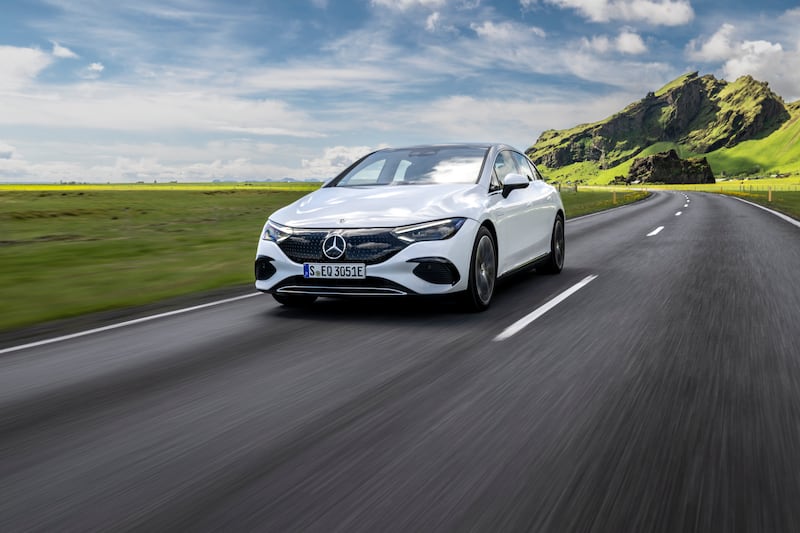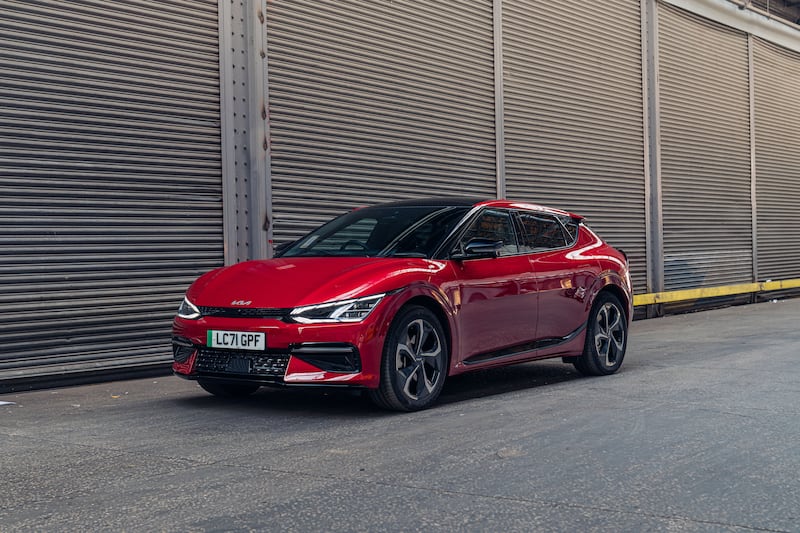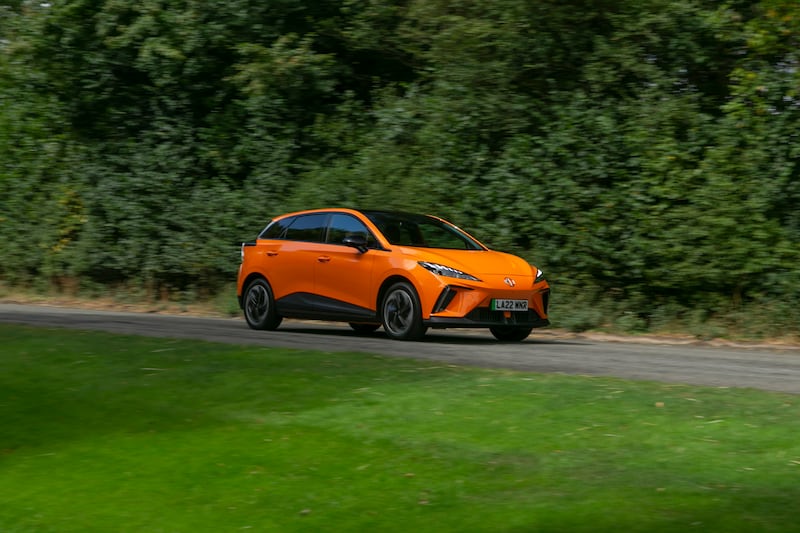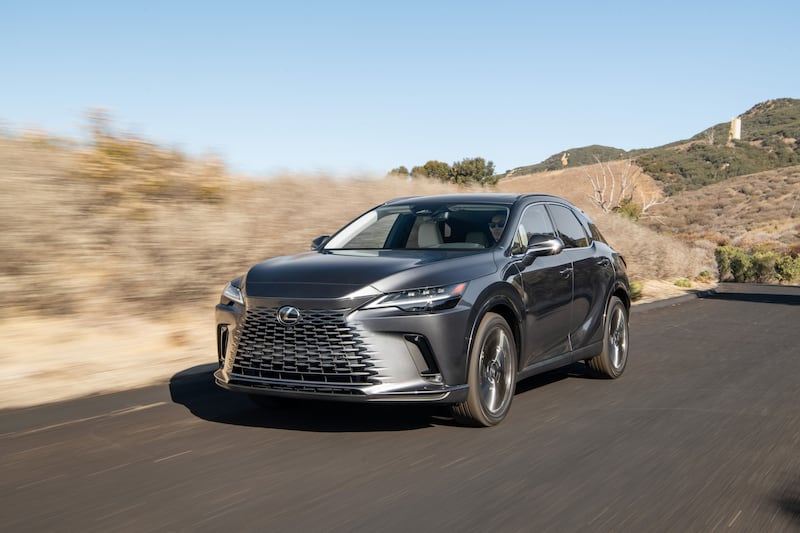While it has never fun paying tax, and it’s certainly never fun paying more tax, the fact is that for company car users that’s exactly what’s happening in January. From the first of the month there’s a new benefit-in-kind (BIK) tax charge on new company cars. The new system mixes the car’s CO2 emissions, its price tag and your mileage to come up with a calculation of between 9 per cent and 37.5 per cent of the car’s value.
Drivers of electric cars don’t escape either – the previous 0 per cent rate for electric company cars is being phased out, and by 2026 EV drivers will end up paying 22 per cent BIK for their privilege.
While that all adds up to a lot of money, there are some brilliant new cars out there that make paying your BIK feel worthwhile, so here’s rundown of the best of those which come in at the lowest BIK rate.

- Mercedes-Benz EQE. Priced from: €85,295. BIK EV reduction: €35,000 in 2023. BIK rate for 2023: 18 per cent (assuming up to 39,000km covered).
Mercedes’ midsize electric car is not what you’d call cheap, but the sliding scale of electric-car BIK relief means you can knock €35,000 off the purchase price for tax purposes in 2023, and anyway, it’s still a lot cheaper than the bigger, stylistically similar, EQS. While the EQS has the edge on luxury, the EQE is a better car to drive by far, avoiding the slight sense of driving a very quiet canal boat that you get from the EQS. In fact, the EQE is quite sharp to drive, so it’s worth spending a little extra to get the optional air suspension to ensure that you are maximising comfort on longer journeys. Longer journeys? In an electric car? You’d better believe it. Mercedes officially claims a one-charge range of 640km for the EQE, and in our hands we got one to drive from Belfast to Skibbereen before it ran out of juice. Space in the rear of the cabin isn’t brilliant, and the boot is on the small side, but these seem like prices worth paying for such cutting-edge electric tech.
2. BMW i4 eDrive40. Priced from: €65,505. BIK EV reduction: €35,000 in 2023. BIK rate for 2023: 18 per cent (assuming up to 39,000km covered).
While the pricier Mercedes EQE shows electric cars can be as long-legged and comfortable as the diesel saloons we all used to love, the BMW i4 shows battery power can be fun, too. The i4 shares a chassis with the petrol-powered 4 Series Gran Coupe, and with four doors and a decent boot it’s pretty practical (although you’d not want to stick tall people in the back for a drive to Cork and back). There is a more overtly sporting M-Sport variant, the i4 M50 (slightly unfortunately named in Irish terms) but the basic eDrive40 model is the one to go for. You get a big 83kWh battery which gives you excellent range – BMW claims up to 590km on one charge, and you’ll do 450km without trying. More importantly, it drives like a true BMW, with sharp steering, rapid acceleration, and a delightfully-honed chassis balance. One of the best all-round EVs you can buy right now.

3. Kia EV6. Priced from: €54,300. BIK EV reduction: €35,000 in 2023. BIK rate for 2023: 18 per cent (assuming up to 39,000km covered).
Think a mere Kia can’t mix it with the likes of BMW and Mercedes? Think again – the big EV6 cannot only match the German giants when it comes to cabin quality, it’s damn near as good to drive as them too. The standard model gets a generous one-charge range of up to 528km, and that’s a realistic number as Kia (and its cousin, Hyundai) seems to have best mastered the black magic of getting the most out of its EV batteries. Inside, you get a roomy and comfortable cabin with a very high-tech dashboard, while outside you get sporty styling which Kia says is partly inspired by the classic 1970s Lancia Stratos rally car. The EV6 is a big car, but it feel wieldy and agile in the corners, and if you go for the pricey but powerful GT model you’ve got the sort of acceleration to scare passing Porsches and Ferraris.

4. MG 4. Priced from €27,495. BIK EV reduction: €35,000 in 2023. BIK rate for 2023: 18 per cent (assuming up to 39,000km covered).
Up until now, MG probably wasn’t figuring on the radars of most company car buyers. The revived brand, born in Britain in the 1920s and revived by Chinese owners when the original MG went bust in 2005, has been making a comeback of late but had largely been making cheap and cheerful cars. The new MG 4 is certainly cheap – in fact, at a starting price of €27,495 it’s arrestingly cheap by electric car standards – but it’s rather better than just cheerful. In fact, the MG 4 is good enough to give mainstream cars such as the Volkswagen ID. 3 and Hyundai Kona a serious run for their money. It looks sharp from the outside, and the cabin is (mostly) well made and (totally) spacious and comfortable. It’ll go for a claimed 310km or 450km depending on which battery you buy, and it’s well equipped too. Downsides? The boot is small and the infotainment system is fiddly, but make no mistake – at this price, the MG 4 is a game-changer.

5. Range Rover. Priced from: €146,000. BIK rate for 2023: 18 per cent (assuming up to 39,000km covered).
If you’re a true captain of industry, you’re going to want to reward yourself and what better way to do that than with a shiny new Range Rover? Ah, but you may be worried about projecting the wrong image, what with climate change to the forefront of everyone’s minds. Fear not – while you can buy a new Range Rover with petrol or diesel engines, most will be sold as plug-in hybrids, with CO2 emissions starting from as little as 18g/km and a 110km range on a full charge of the battery. So yes, if you’re reasonably diligent about keeping it charged up, this large, luxurious 4x4 can be less harmful to the environment than a humble family hatchback. Inside, you’ll find a beautiful, understated cabin with gloriously comfortable seats, while outside you can tackle the worst terrain you can think of with ease (or just use the rear-wheel steering to make city-centre parking a little easier).

6. Lexus RX450h+. Priced from: €87,330. BIK rate for 2023: 18 per cent (assuming up to 39,000km covered).
Lexus’s new big luxury 4x4 can’t quite match the Range Rover for electric mileage on a full charge, but with a potential range of 65km from its smaller battery, it’s still capable of dealing with regular commutes. The RX models down the years have pioneered hybrid technology, so no surprise that the latest Lexus gets a cutting-edge plug-in hybrid set-up, which combines ultra-smooth V6 petrol power with fuel-and-emissions-saving hybrid tech. The styling of this new RX treads a deft line between ostentation and subtlety, but what really sells it is the sumptuous cabin, which has the kind of quality that, honestly, you’d have to spend hundreds of thousands more on a Rolls-Royce to truly equal.














